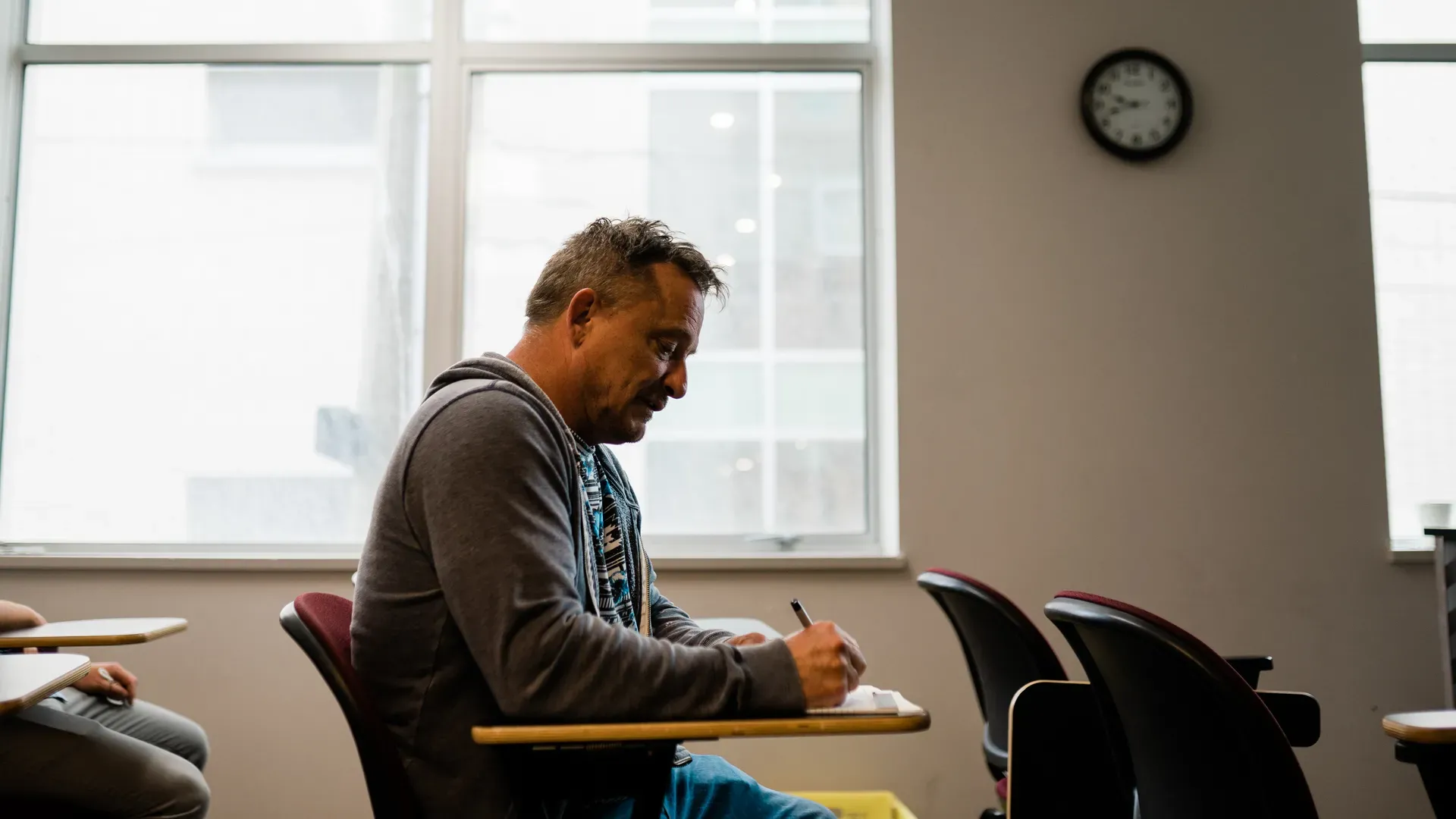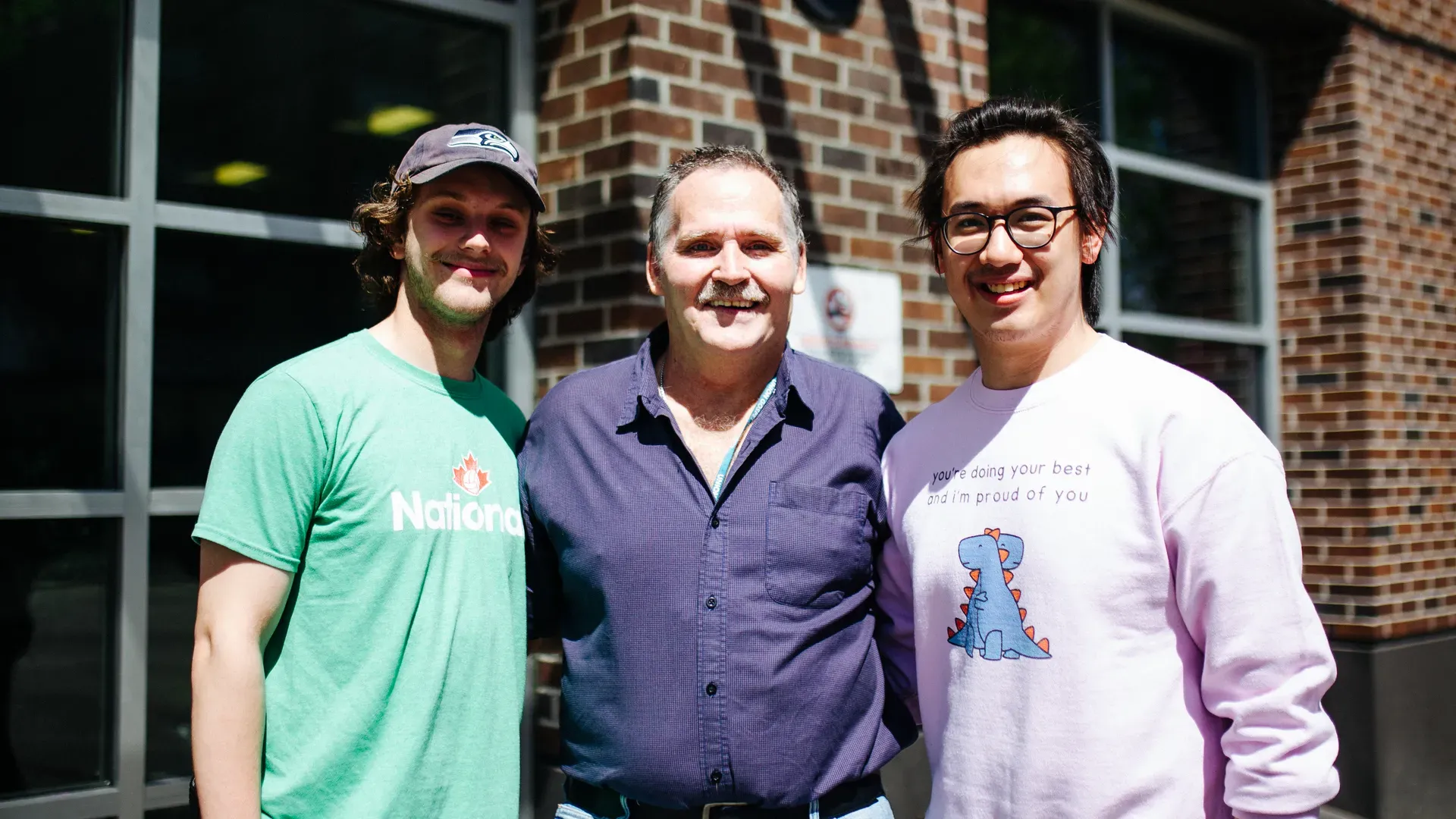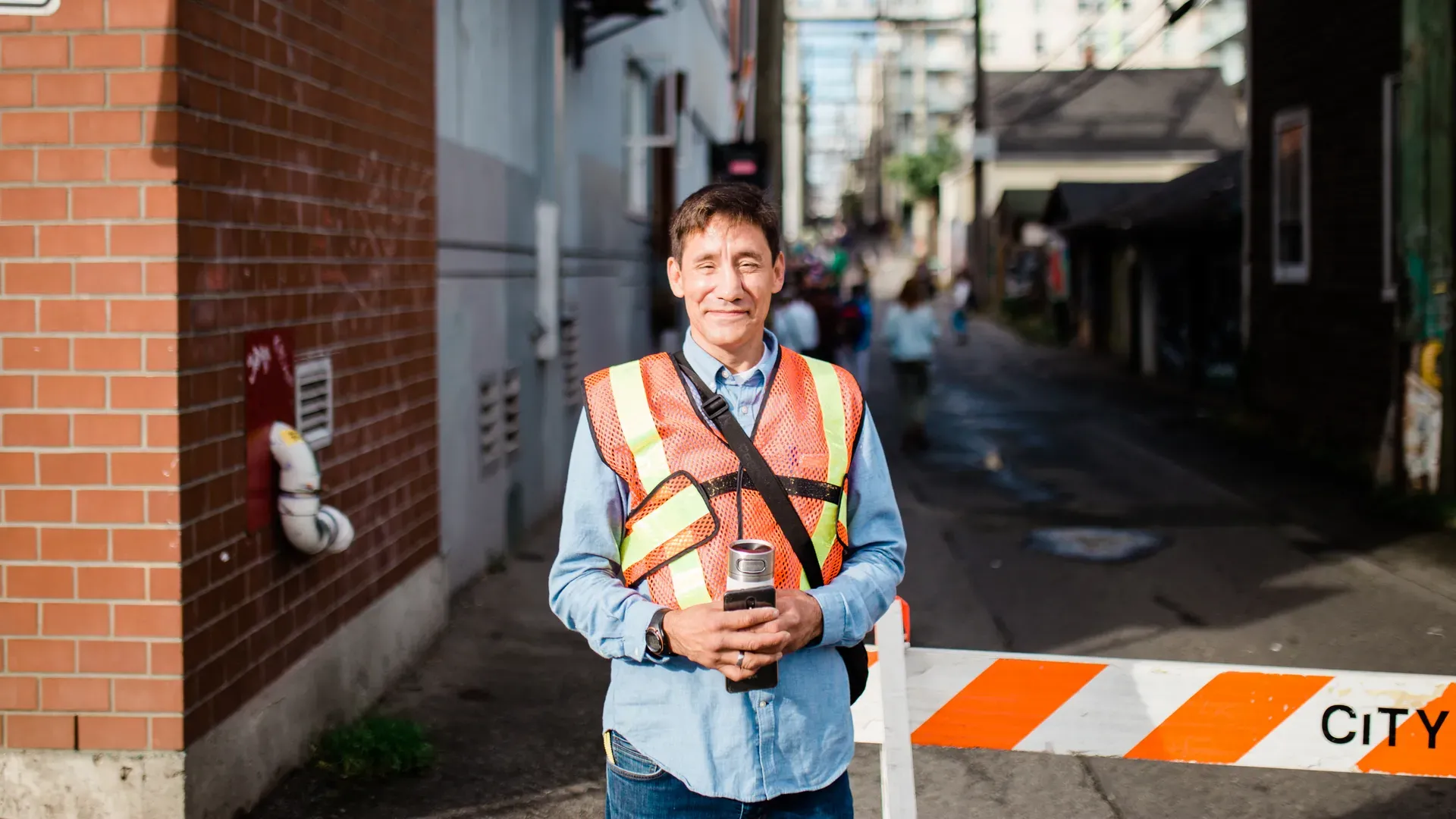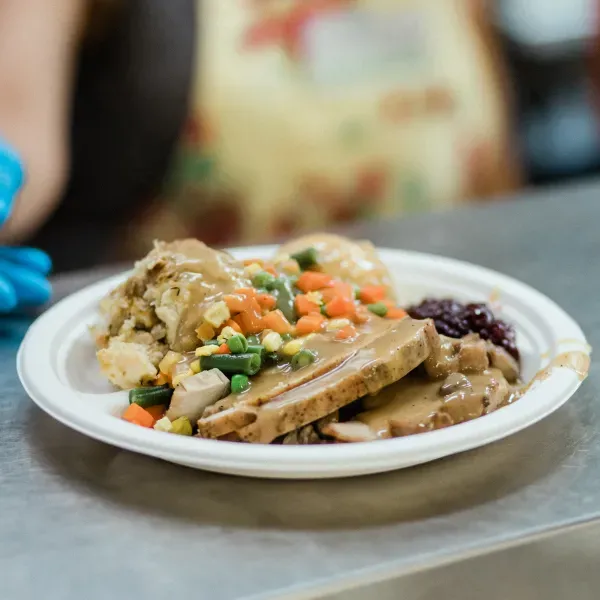We recently shared this year’s statistics about the opioid overdose crisis that continues to impact so many lives in our communities. Faced with overwhelming numbers and loss, it can be hard to maintain hope — or to understand which responses might be effective in slowing the wave of accidental deaths.
Here, we’ve assembled a helpful guide to the potential solutions to the drug poisoning crisis. Our hope is that this guide will equip you to better understand, support, and advocate for people currently facing addiction and the risk of overdose.
At Union Gospel Mission, our focus and heart has always been that people find recovery and freedom from addiction. That remains our unifying purpose. In this guide, we’ve included interventions outside of those offered at UGM in order to paint the wider picture of how people might find their way to better health and balance. We hold a neutral position on these approaches: our priority is not to endorse or decry any particular intervention, but to contribute to the well-being of our community members through the offering of caring, holistic, and safe recovery programming.
At the end of the day, we believe that when more options and support are available, communities will begin to see transformation and hope.
#1: Prevention and education

Prevention and education are pivotal first steps in interrupting the use of opioid drugs, as highlighted in the November 2022 Legislative Assembly of British Columbia health report. In-school and after-school educational programming for children and youth, and training in early intervention for adults are just a few of the suggestions the report put forward for people looking to better understand the scope of the epidemic.
For individuals just beginning their education journey, it’s important to recognize that drug use rises out of a complex system of inequalities. People often turn to substances to mitigate untreated chronic pain, longstanding trauma, or to manage mental health challenges. Adding in the current stressors of housing insecurity, high inflation, and social isolation paints a clearer picture of how people from all walks of life can find themselves falling victim to the toxic drug supply.
Whether it’s providing children and teens with engaging after-school programming, fostering welcoming community spaces, or learning more about the very real hurdles facing families in BC, prevention and education are an essential part of any response to the ongoing opioid crisis.
#2: Treatment and recovery

For people who are looking to step away from their drug dependency, treatment and recovery can be valuable supports in the process of forming new habits. Recovery can include some or all of the following components:
Detox spaces
Many people who have been using drugs habitually need to medically detox — sometimes referred to as stabilization — before being able to enter into a recovery program. Because ridding the body of drugs and alcohol can cause withdrawal symptoms, it’s important that people are able to detox in a supervised environment with medical support available. Despite the importance of detox as a step towards recovery, BC is currently facing an alarming lack of available detox beds — so much so that people seeking treatment are sometimes turned away.
Recovery and treatment programs
Each person is different — and so is their journey with drug use and addiction. A variety of recovery options are available in BC, allowing people to find the programming that best meets their needs.
Union Gospel Mission offers three unique recovery programs: two for women in the Downtown Eastside and Mission, and one for men in the Downtown Eastside. Our Women’s Recovery Program in the Downtown Eastside was intentionally created to be family-centred to help keep families together. All of these programs take a holistic approach to recovery, engaging the whole person: body, mind, social connections, and spirit.
Other recovery programs have been designed to support participants in a multitude of ways, all with the goal of helping people navigate away from substance abuse. By addressing the root causes of addiction, programs like these can equip people to build the lives they want to live.
Ongoing community
To help maintain their recovery, it’s vital that people are able to stay connected with recovery communities. This might involve living in recovery-focused housing after they finish their formal programming, visiting neighbourhood groups like the Recovery Café or Jacob’s Well, or participating in a recovery alumni association. UGM’s Aftercare programming focuses on supports like career development, counselling, and peer mentorship. By staying involved and known, people living out their recovery have the chance to encourage others who are earlier in their journeys, while building new skills and maintaining essential relationships.
#3: Preserving life

As people experience substance use disorder, their journey towards better health is not always linear — or fast. It’s crucial that people accessing the available drug supply are treated with dignity, and can connect to services that increase their quality of life.
Programming that seeks to mitigate the impact of drug use on the individual, their families, and their communities falls under the umbrella of harm reduction. Harm reduction as an approach acknowledges that different people have different needs at different times, and aims to reduce risks and improve the health of people using drugs. It does this through:
Drug testing
Free and confidential drug testing allows people the safety of knowing what’s in the drugs they’re taking. Organizations like Vancouver Coastal Health provide people in BC with resources about where they can go get their drugs tested before they consume them. This simple step saves lives.
Supervised consumption sites
All across BC there are clean, safe places where people can go to use their substance of choice under the supervision of trained staff. Supervised consumption site staff are on hand to test drugs, administer naloxone to help prevent fatal overdoses, and connect individuals to further health services like treatment, should they want the information. The latest reporting for 2023 counts only one death by overdose at a safe consumption site, while 47% of unregulated drug deaths occur in private residences.
#4: Government measures

Safer supply
Advocates at all levels of government — including the City of Vancouver, the Province of BC, and the House of Commons — have been vocal about the need for a regulated, safer supply of drugs as part of the response to the opioid crisis. A harm-reduction measure, prescribed safer supply provides people with access to the drugs they are using, undercutting the need for the illicit drugs that are currently causing thousands of fatal overdoses each year.
The movement towards safer supply is underway: BC has a prescribed safe supply program that launched in March 2020 and was formalized in July 2021. The program is currently only available to 5% of the estimated 100,000 people who are diagnosed with opioid use disorder in BC, but pilot projects like this one are ‘showing encouraging evidence of saving lives’.
Decriminalization
The Federal and BC governments have also responded to the opioid crisis by decriminalizing small amounts of illicit substances. From January 31, 2023 until January 31, 2026, adults will no longer be criminally charged for possession of up to 2.5g of illicit substances intended for personal use.
The goal of this exemption is not to legalize the use of illicit substances, but to treat drug use and addiction as a health issue rather than a criminal one. It also hopes to reduce the stigma and shame around drug use, so that people using drugs can reach out to access vital supports, rather than being afraid of being charged for possession.
Frontline workers have shared that the new legislation has encouraged people to have their drugs tested and build new relationships with health providers. While only part of a holistic solution, the decriminalization pilot will be monitored over the next three years to determine its effectiveness.
A future marked by hope
There have been key movements and policy changes in harm reduction and decriminalization in recent years — all with the goal of saving lives. Advocates continue to call for expanded growth in treatment and recovery, knowing that as the opioid crisis continues, we have less and less time to make a difference.
But as we’ve seen time and time again at UGM, when the right supports are in place and people can receive the help they need, anything is possible. Having just marked International Opioid Awareness Day on August 31, we encourage you to continue learning and giving hope to people in your community. Whether you contact your MLA or MP or give towards essential recovery services, you are helping people access what they need to find greater safety and well-being.
Learn more about how UGM is working to encourage our neighbours, and sign up for our email lists for more informative stories.


